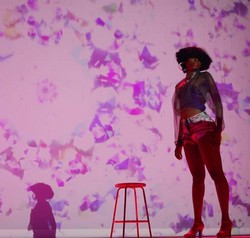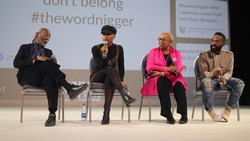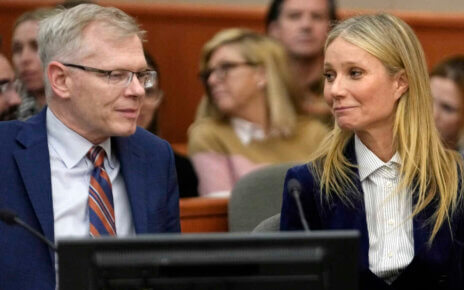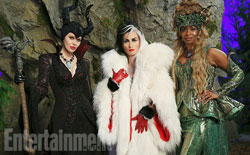When I walked into Pollak Theatre, my generation’s hip-hop and rap songs were playing over the sound system. I sat down and was subtly grooving to the music and mouthing the lyrics, except the “N” word, which was said repeatedly and not censored out. I thought “Ooh this is gonna be good, they have a good playlist to start out with.” Little did I know that people like me, sitting there and singing along to the songs, were the reason the performers chose that playlist.
After the music stopped and the stage went black, a video slideshow of African Americans’ lynchings was presented to the audience. Everyone went silent. You could physically feel the switch in the mood and energy of the room.
Then, a video of Jade Soloman Curtis, a dancer and choreographer and the mind behind Black Like Me, came onto the screen. She was talking to a man who was explaining the pain inflicted on slaves.
He discussed how for their first offense they would be branded on one shoulder, and their ears would be cut. For their second offense, their other shoulder would be branded and their hamstrings would be cut. These dark images stuck with me throughout the rest of the night.
Following the video slideshow, the screen projected grass waving in the wind. Jade laid on a box center-stage, in a beautiful, yet distressed white dress. Oddly, trap music was playing overhead, but it painted the scene that she intended: slavery.
 Her dance movements reflected that of a woman in pain, calling for help. It was a little creepy, because no one in the audience really knew what was going on, but it was also powerful.
Her dance movements reflected that of a woman in pain, calling for help. It was a little creepy, because no one in the audience really knew what was going on, but it was also powerful.
After her dance performance, the stage went black again. It was relit with a video of police attacking an unarmed, innocent black man. The next video shown was of Sandra Bland in her car, being hounded by a police officer. She was doing nothing wrong, sitting in her car, stating her rights as the officer was trying to drag her out.
It was so disturbing to see, especially as I’m surrounded by African Americans who may or may not have dealt with similar situations. It really is heartbreaking to watch, and I just wanted to jump out of my seat and scream about how wrong it is, but that was the point of showing these horrible videos: to get people to realize.
Curtis took stage once again to perform another dance solo, wearing neon green shorts and a matching sweatshirt. Her energetic moves covered the whole space of the stage. When she was finished, a panelist of three African Americans took the stage; Gail Boyd, Walter Beach, and Arif Gursel.
Boyd started by asking Beach, who is 87 years old, when the first time that someone called him the “N” word was. He said he was nine, and a white boy called him the word after Beach beat him in a running race. Beach beat the kid up, and eventually had the Ku Klux Klan at his door looking for him. After all those years, Beach points out, the word is still being used.
Gail then asks Arif if N**er and N**ga have the same meaning. He said yes, but some people just can’t spell (which got the crowd laughing). Then, they had audience members come up to the four microphones set up around the room, and say anything they wanted. Surprisingly, many audience members chose to speak their mind. Some even started arguments with the panelists. It was very interesting to watch and listen to all of these intelligent individuals.
Towards the end of the night, Arif stated that they specifically chose to play the songs that they did in the beginning when everyone was walking in. This was to show the audience that people still use the word, even if it’s modified.
Going right from the music, to the videos of the lynchings were to demonstrate the actual meaning behind the word. Arif stated that the “N” word was probably one of the last things these people heard before they were murdered. If that doesn’t get the message across, who knows what will.
Be respectful. Let’s be the generation that ends the use of that disgusting word.
PHOTOS COURTESY of Kelly N. Grant




